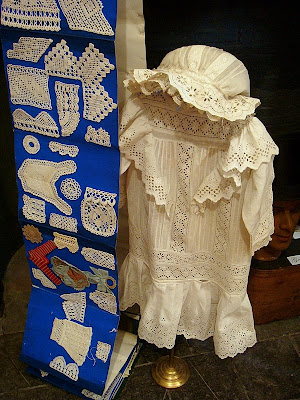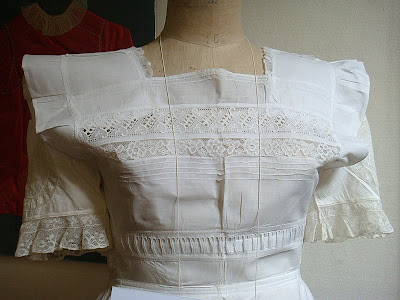Het opspannen van de sjaal was niet zo makkelijk: 100% zijde is nu eenmaal minder toegeeflijk dan wol. Maar het wonder van kantbreiwerk voltrok zich weer: de patronen kwamen volop tot uiting met golvingen en mooie verschillen in densiteit:
Blocking this shawl was not particularly easy: 100% silk is very inelastic in comparison to wool. But the wonder of lace knitting was realised: the patterns came out in all their splendor with curves and differences in density:


Hulp is nooit veraf:
Always helpful this delicate feline creature:
Het kan niet ontkend worden dat Estlandse kantpatronen buitengewoon breiwerk opleveren...
It cannot be denied that Estonian lace patterns lead to extraordinary knitting...

















































